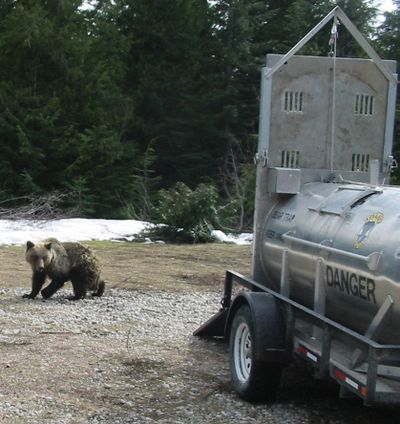Nuisance grizzly bear relocated

A Dumpster-diving grizzly was trapped near Elmira, Idaho, and released into the wilder reaches of the upper Priest Lake area.
Wildlife agents caught the 175-pound female in a baited trap Sunday. She was one of two grizzlies recently spotted near Elmira and McArthur Lake, close to the foothills of the Selkirk Mountains.
The bears were raiding trash. They probably were 2-year-old siblings “booted out by mom” to forage on their own, said Wayne Wakkinen, an Idaho Fish and Game research biologist.
In the spring, grizzlies wander to lower-elevation areas looking for skunk cabbage, clover and other forage. The Elmira-McArthur Lake area greens up early, providing good grazing. But the trash offered easier pickings.
“They were looking for a meal, and it was a free, easy meal,” Wakkinen said. “It’s kind of a classic case. … We’re talking with people about securing their garbage.”
The agency hopes to get a grant to provide bear-proof trash cans. Bird feeders, compost piles, dog food and outdoor barbecues also lure bears into backyards, Wakkinen said.
After she was captured, the young grizzly was outfitted with a global positioning unit so wildlife agents can track her movements. The other bear disappeared.
In upper Priest Lake, the female grizzly will have less contact with people and fewer opportunities to become a nuisance, Wakkinen said
Between 30 and 35 grizzlies are believed to roam the U.S. portion of the Selkirk range, which extends north into British Columbia. Last year, researchers collected grizzly hair for DNA testing, which will help refine population estimates. The Selkirk grizzly population is believed to be slowly expanding, Wakkinen said.